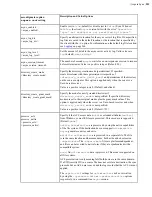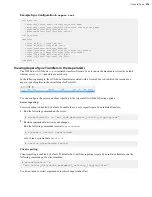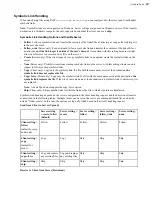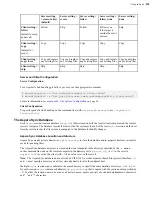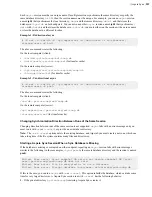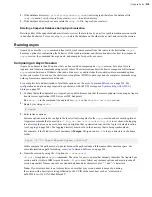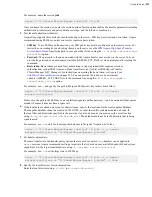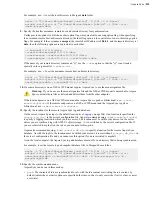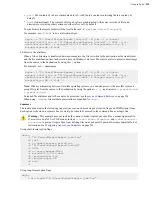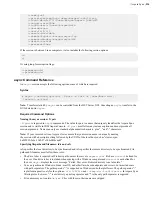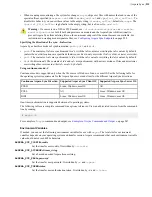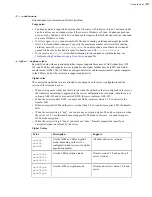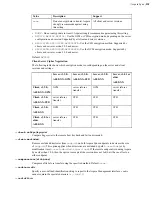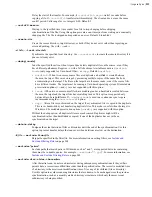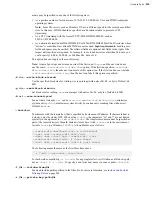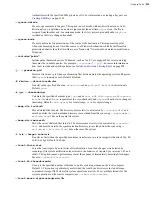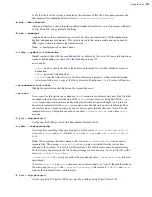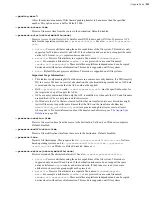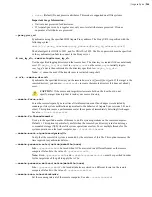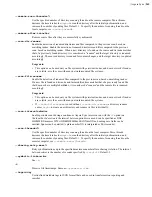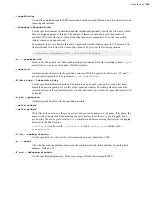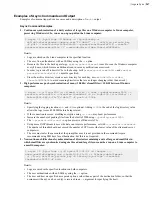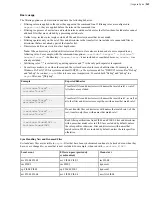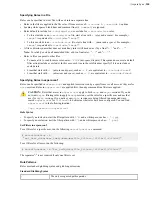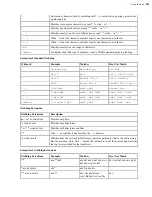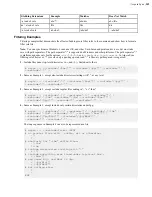
| Aspera Sync |
239
Delay the start of the transfer. For example, if
--cooloff=5
,
async
waits 5 seconds before
copying a file. If
--cooloff=0
transfers start immediately. The client and server use the same
cooloff period. Valid range for
sec
: integers 0-60. Default: 3.
--cooloff-max=
sec
Wait up to the specified time (in seconds) for a file to stop changing before skipping
synchronization of the file. Using this option prevents a one-time sync from waiting on a constantly
changing file. The file is skipped and reported as an error. Default: 0 (disabled).
--create-dir
Create the source directory, target directory, or both if they do not exist, rather than reporting an
error and quitting. Use with
-d
and
-r
.
-d
ldir
,
--local-dir=
ldir
Synchronize the specified local directory. Use
--create-dir
to create the remote directory if it
does not already exist.
--dedup[=
mode
]
Take the specified the action when Aspera Sync detects duplicate files on the source, even if they
have different pathnames. Requires
-k
with a full checksum. Available modes are
hardlink
,
inode
(only supported for Unix-based OSes), or
copy
. Default:
hardlink
.
•
hardlink
- When two or more source files are duplicates, a hardlink is created between
them on the target. This saves storage by preventing multiple copies of the same file from
accumulating on the target. The files on the target have the same inode, even if the source files
have different inodes. The target must be running a Unix-based operating system. File metadata
preservation options (
-u
and
-j
) are not supported with this option.
•
inode
- When two or more source files have matching inodes, a hardlink is created between
them on the target and the target files have matching inodes. This option is supported only
between Unix-based platforms. If
--dedup=inode
is used in a continuous sync, Aspera
recommends using the
scan-interval
option.
•
copy
- After a file is synchronized on the target, the synchronized file is copied to the duplicate.
This saves bandwidth by not transferring duplicate files. This mode is useful when the target is
Windows. File metadata preservation options (
-u
and
-j
) are supported with this option.
Without the dedup option, all duplicate files are synchronized. Duplicates might still be
synchronized, rather than hardlinked or copied, if one of the duplicates has not yet been
synchronized on the target.
--delete-delay
Postpone the actual deletion of files or directories until the end of the synchronization. Use this
option to prevent transfer delays that can occur when deletions are slow on the destination.
-E
file
,
--exclude-from=
file
Skip paths specified in the filter
file
. For more information on setting filters, see
on page 248.
--exclude=
"
pattern
"
Exclude paths that match
pattern
. Wildcards, such as * and ?, are supported but rules containing
them must be in double quotes. For example,
--exclude="*.jpg"
. For more information, see
Include and Exclude Filtering Rules
on page 248.
--exclude-dirs-older-than=
mtime
After the initial scan, do not scan directories during subsequent synchronizations if they or their
parents have a recursive modified time older than the specified value. The recursive modified time
of a directory is the most recent modification time of it or any of its children (file or directory).
Use this option to avoid rescanning directories that are known to be unchanged since the previous
synchronization, such as a monthly archive directory structure in which only the most recent
subdirectory is being modified.

